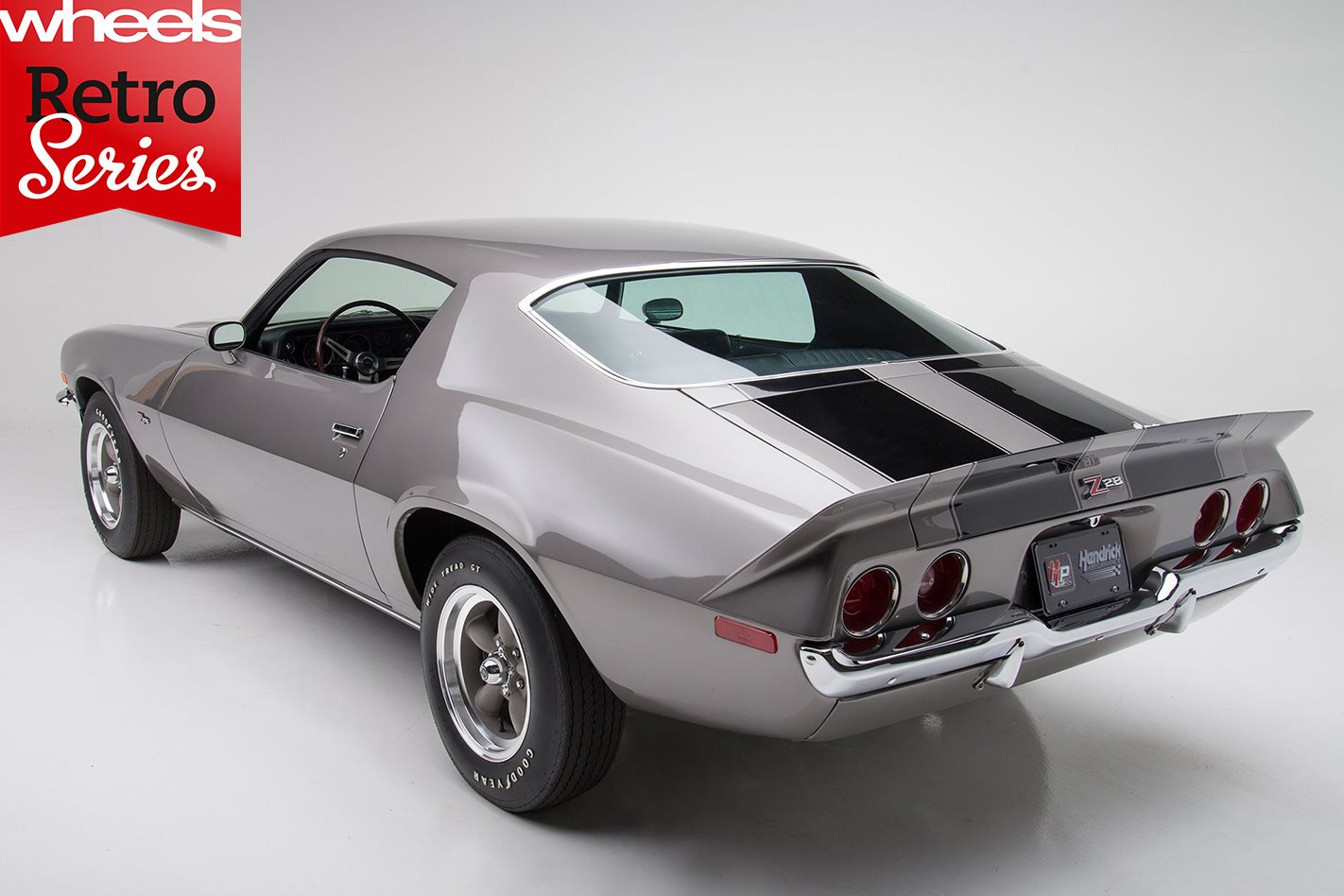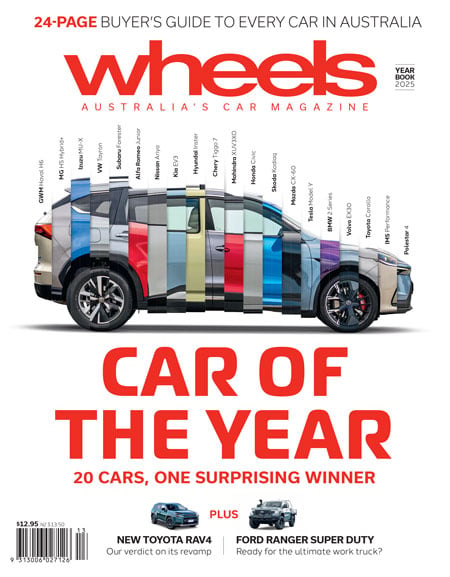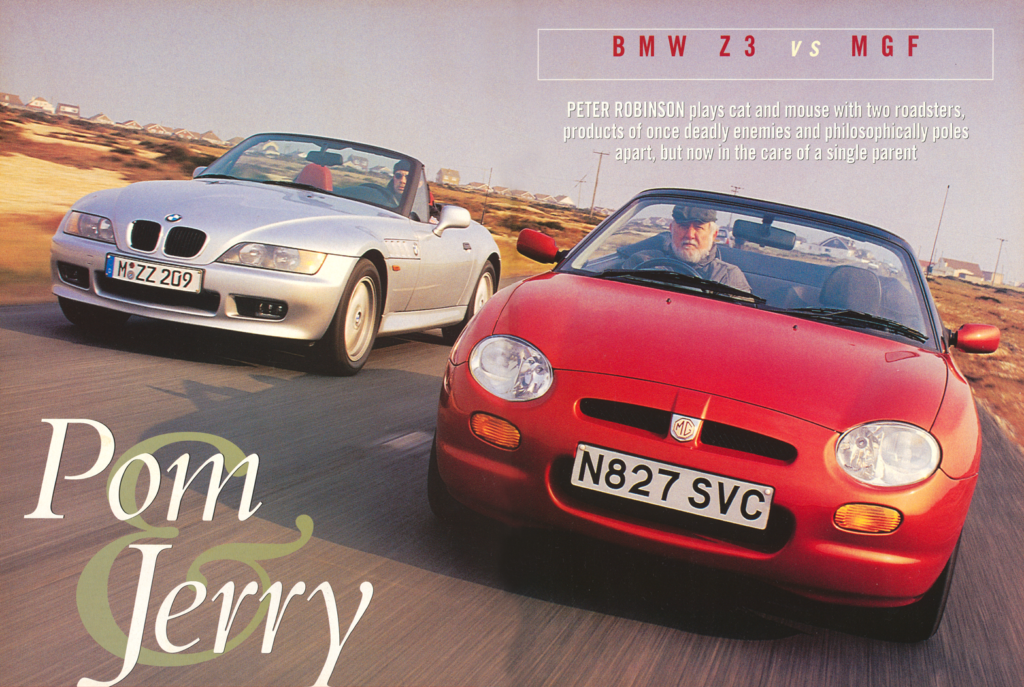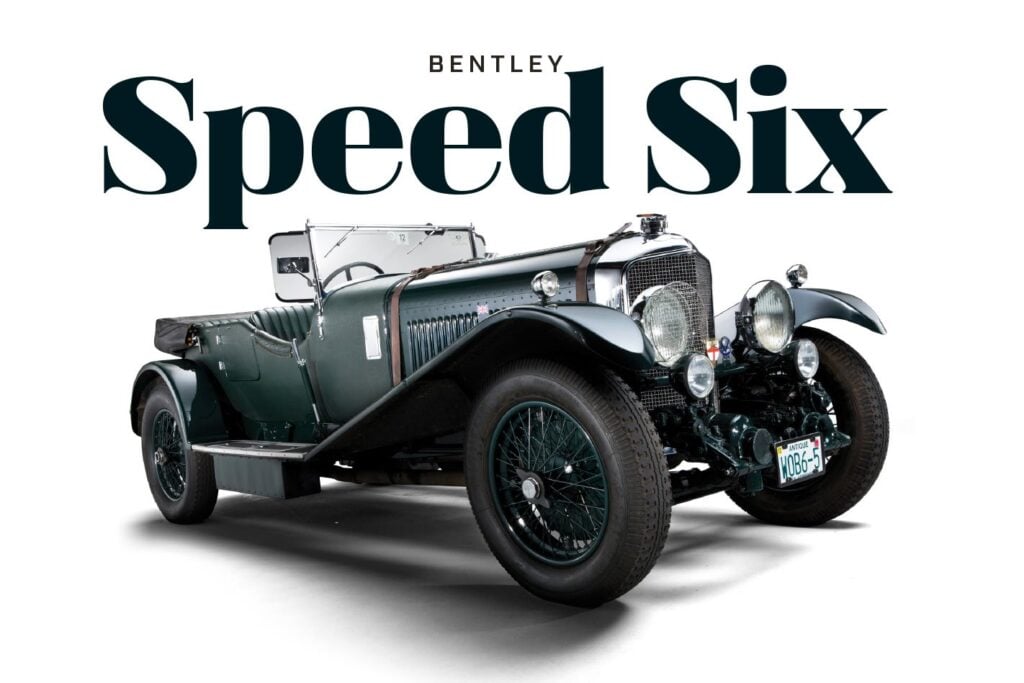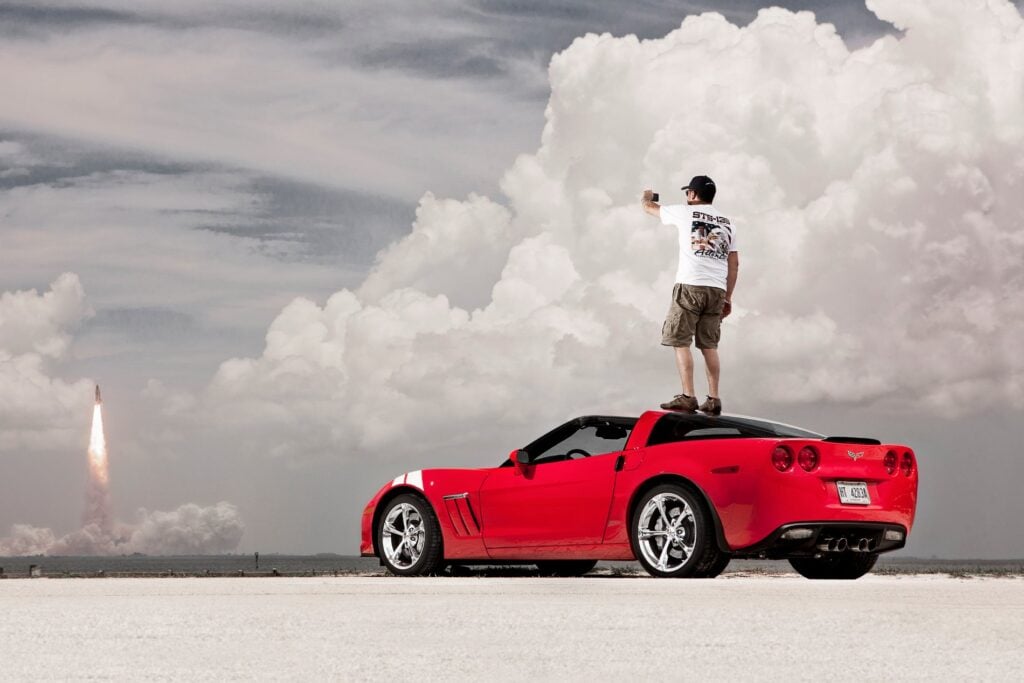More racing success beckoned for the second-generation Camaro.
IT WAS never going to be easy responding to Ford’s mighty Mustang, but Chevrolet’s Camaro of 1967 had done a good job. By 1969, helped by its SCCA Trans-Am racing successes, Camaro was getting a lasso around the runaway Ford, selling 243,000 to Mustang’s 300,000.
Chevrolet had a dramatically styled successor waiting in the wings.
The new-for-1970, second-generation Camaro carried over the same F-body platform, but the stylists had taken cues from Ferrari (and perhaps Jaguar’s XJ) and penned a front end with raised pontoons and a gaping, egg-crate grille. A fastback coupe body – there was no convertible – with circular tail-lights helped the Maranello mirage.
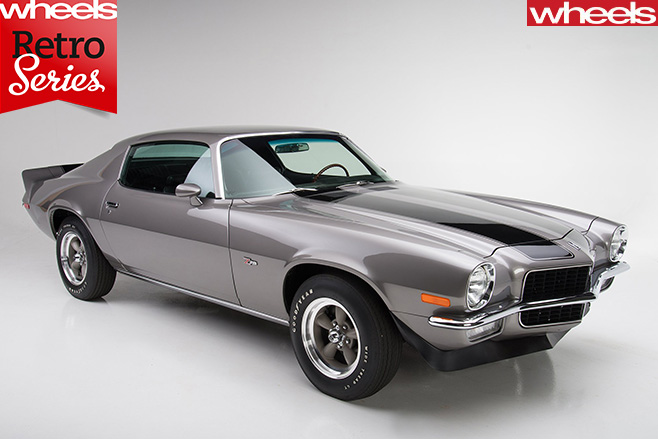
But the panels proved to be a nightmare for the toolmakers at GM’s Fisher Body division, splitting and wrinkling in the draw dies.
New tooling delayed the car’s production by four months. Its introduction in February 1970 led many punters to refer to this generation as the ‘1970½’.
Even in the face of Ford’s newly muscled-up Mustang range, the ’70 Camaro earned rave reviews. The Euro-coupe styling could be enhanced with a Rally Sport trim option (Z22). This, in turn, could be stacked with Super Sport (Z27), bringing better tyres and brakes and an invitation to the 6.6-litre (‘396’, though actually 402 cubic inches) big-block V8.
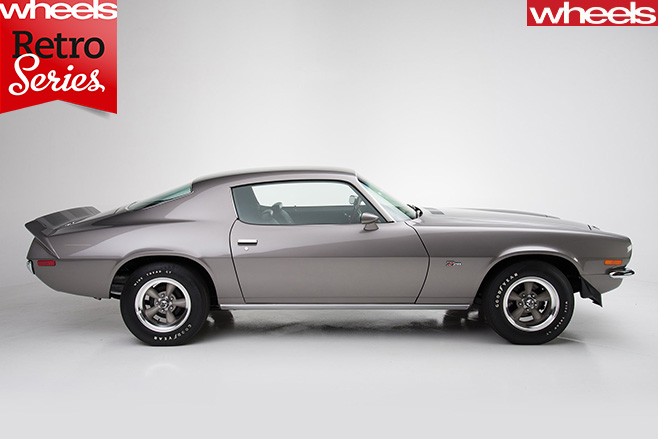
For the king of Camaros, however, one ticked the box marked Z28. That brought a Corvette-derived 350 LT-1 engine producing 269kW (versus the RS 350’s 224kW) and much tougher internals. The Z28 was an homologation special, designed to extend GM’s two-year reign in the Trans-Am and take advantage of new regs that allowed de-stroking larger engines to the 5.0-litre (305ci) race limit.
US mags raved over the new Z28’s tractability, especially after the ’69 car’s highly strung 302. An auto Z28 became available for the first time. Car & Driver clocked a four-speed manual at 0-60mph (97km/h) in 5.8sec, and a quarter-mile in 14.2.
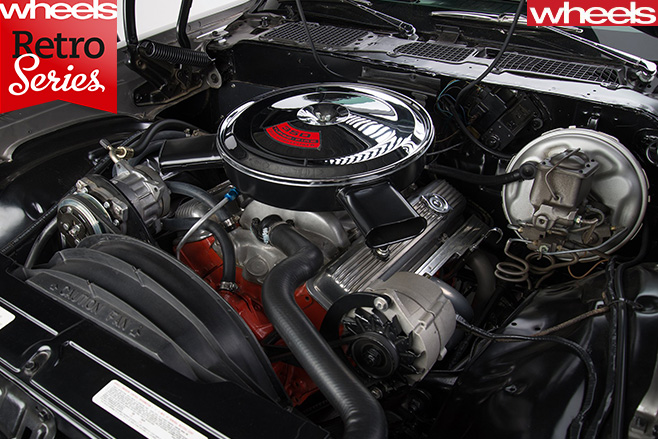
The toughness through the Z28’s driveline, suspension and brakes made it an instant street/strip/circuit classic. But the pony-car market was galloping towards a ravine.
Many regard the 1970 Z28 as the high point for Camaro. The high-compression heads and 12-bolt rear-end were only used in this model year. Tightening emissions regs soon prompted GM to lower compression ratios; the ’71 Z28 would drop 22kW.
The ’70 Camaro was late to the party, but this generation hung around for 12 years. The first – the 1970 Z28 – remains the best, and only 8733 were built.
Against the woodgrain
New Camaro was dubbed the ‘Super Hugger’ by GM marketing. Interior was dominated by huge transmission tunnel to accommodate big-block options. Bucket seats in 1970 were distinctive low-back items. Wraparound instrumentation had feeble, fake woodgrain. Manual and auto Z28s got an 8000rpm tacho and trick Hurst shifter. SS option brought ‘hide-a-way’ wipers, black-out body treatment and interior detail SS badging.
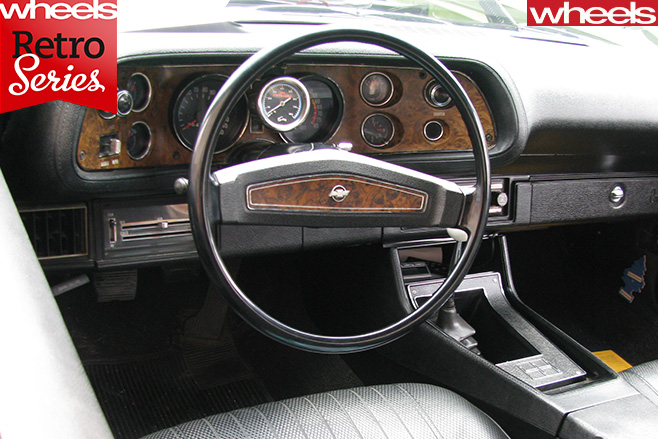
F trooper
The second-generation Camaro was built on the previous F-body wheelbase, albeit with a longer, lower body and wider tracks. In Z28, the double A-arm front and solid-axle, leaf-sprung rear suspension copped the F-41 pack with extra rear leafs and thicker anti-roll bars, 11-inch front discs and 9.5-inch rear drums, and optional Positraction LSD.
Peachy, and keen
Camaro Z28’s LT-1 350 was a peach. High-compression (11:1) heads, a Holley 780cfm on a high-rise manifold, forged pistons, solid-lifter cams, forged steel crank, four-bolt main bearings and baffled sump were all race-ready. Result: 269kW @ 6000rpm and 515Nm @ 4000rpm. A four-speed Muncie manual was standard, three-speed TH400 auto optional.
Fast & factual
1. Back to third
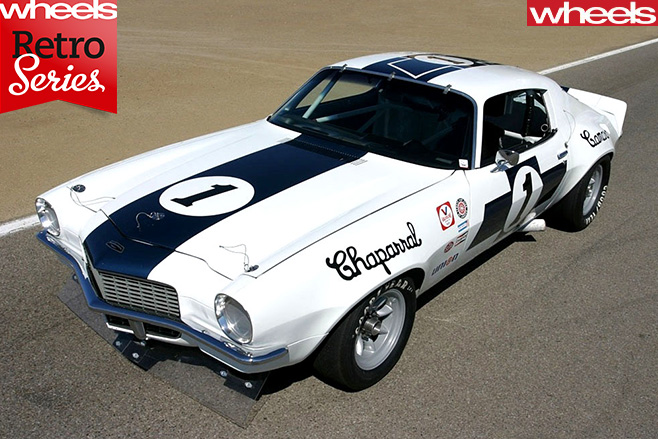
2. That sinking feeling
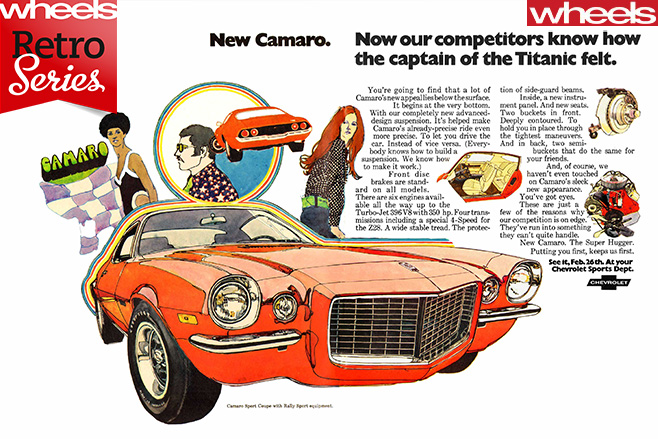
3. Slash the slash
The Z/28 option debuted with the first-generation Camaro in 1967, with a 302 engine for racing. The 1970 Z28 gained cubes, lost the slash.
4. Frankly dominant
Aussie international Frank Gardner dominated British tin-top racing with a Z28 in 1972-73 and directly inspired Kevin Bartlett’s 1979 car.
5. Let the sun shine in
The Camaro was only offered as a coupe. The Hurst ‘Sunshine Special’ was one of three ’70 Z28s built by the famed race-shifter supplier with an experimental sunroof.

